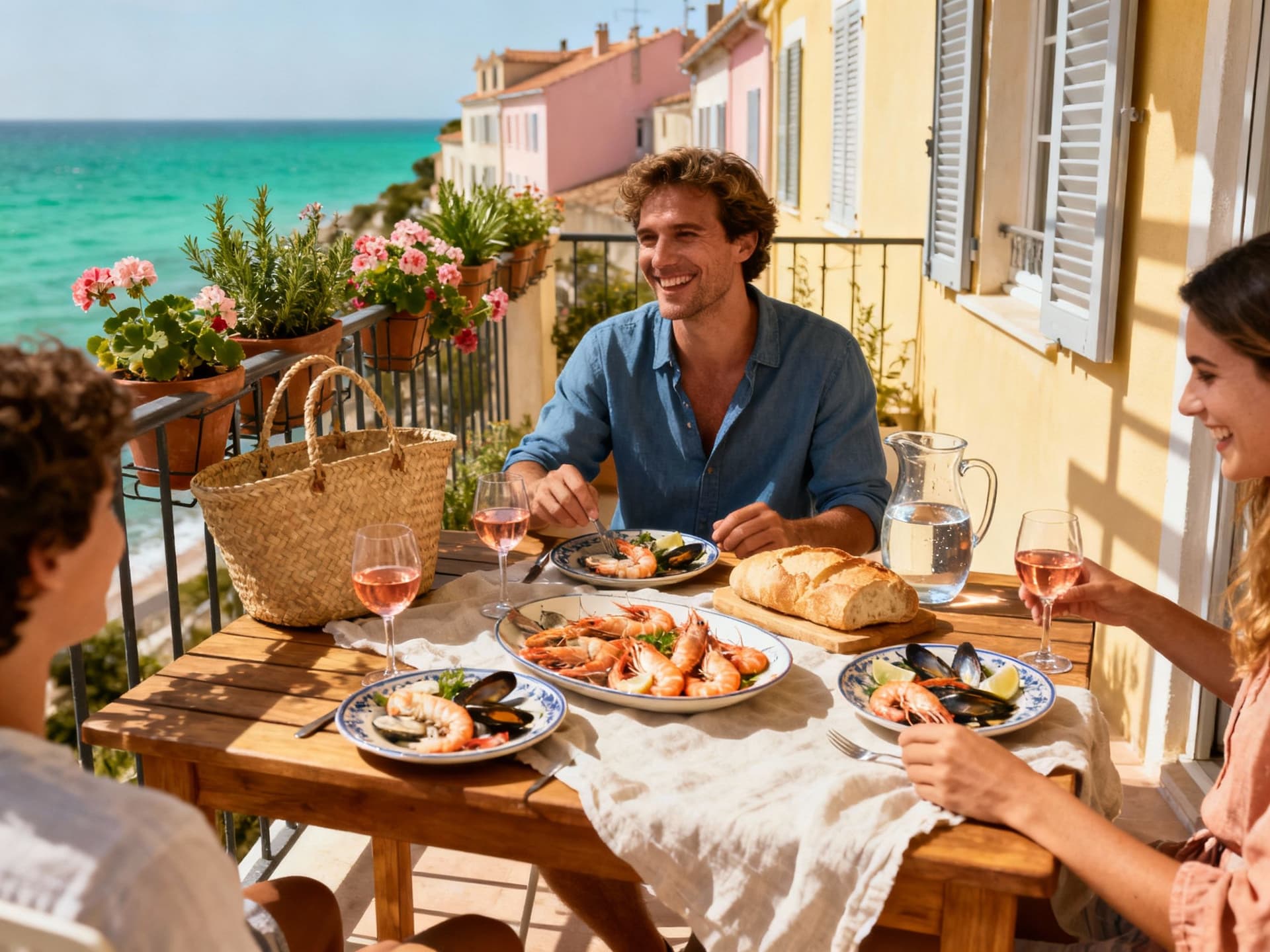How France’s Transport Fabric Turns Lifestyle Into Yield
How France’s transport fabric — from Grand Paris stations to TGV links — converts lifestyle choices into measurable rental demand and lower vacancy risk.
Imagine stepping out of a sunlit boulangerie on Rue des Martyrs with a fresh pain au chocolat in hand, then catching an RER that drops you at La Défense in 25 minutes — that everyday ease is one of France’s quiet superpowers. For international buyers the country sells a lived-in dream: cafe life, weekend markets, Atlantic surf breaks and Alpine access — but the route from desire to ownership is shaped as much by infrastructure and transport decisions as by charm.
Living the France lifestyle: rhythm, place and transport

France feels like a series of neighbourhoods you learn to love — the 11th arrondissement’s cafés and marchés, Bordeaux’s riverfront promenades, or the Corniche in Nice at dawn. But what turns those neighbourhoods into reliable investments for international buyers is predictable mobility: fast trains that put cities within a morning commute, metros that expand catchments, and regional airports that keep rental demand steady.
Paris inner‑ring and the Grand Paris effect
Stations, not just districts, are the new real estate magnets. The Grand Paris Express — 200 km of new track and dozens of stations — is reshaping where daily commuters and renters concentrate. New stations create development nodes; when a new stop opens, neighbourhoods typically see faster rental take-up and stronger price resilience over five years. For buyers, this changes the conventional Paris premium: outer suburbs with new connections can offer similar tenant demand to inner arrondissements at lower entry prices. (See Société du Grand Paris data for station impact.)
Coast, rail and seasonality — how connectivity stabilises demand
High-speed TGV connections make summer and shoulder-season tourism predictable, which matters for furnished rentals. Fast rail links (e.g., Paris–Biarritz, Paris–Nice) convert secondary coastal towns into year‑round markets for remote workers and second-home tenants. Good rail + frequent regional flights = smaller rental vacancy windows and steadier cashflows.
Lifestyle highlights in French place-making
Rue des Martyrs (Paris) — morning markets and short walking commutes to multiple metro lines.
Cours Julien (Marseille) — creative quarter with cafés and co‑working demand for long lets.
Gare de Bordeaux and rive droite redevelopment — tram links that widen tenant catchments.
Making the move: infrastructure that changes returns

A core investor question: does transport infrastructure materially change yield and capital growth? Yes — the data show neighbourhoods with better connections often trade at a premium but offer lower vacancy and steadier rental growth. France’s average gross rental yield sits in the mid‑4% range nationally, with city and micro‑market variation. That means connectivity decisions should be judged by their effect on occupancy and long‑term appreciation, not only the headline purchase price.
Property styles that benefit from better transport
Small furnished apartments near stations suit corporate relocations and short professional lets; three‑bed townhouses in suburban communes near RER stops fit families and commuters seeking space. Match property type to the dominant demand in the station catchment: student hubs need studios, family catchments need three‑bedrooms with outdoor space.
How local experts translate lifestyle into yield
Use agents who can map station catchments, visible rental comps and DPE (energy) constraints; these are the practical filters that convert lifestyle choices into investment-grade assets.
Steps to align lifestyle desires with infrastructure-driven returns
1) Identify the lifestyle priority (e.g., beach mornings vs city cafés) and list the nearest transport node (TGV, RER, tram).
2) Pull 3‑year rental vacancy and yield comparables within the station catchment — a local agent or market pack will provide this.
3) Factor DPE (energy performance) and renovation timelines into total cost of ownership — compliance affects rentable stock and time to income.
Insider knowledge: what expats wish they'd known
Practical truth: infrastructure is a promise with a timetable. Grand projects accelerate value but delays (technical, political or fiscal) are common — budget timelines slip and that affects when catchment premiums appear. International buyers who priced ‘rail uplift’ into projections should use conservative timelines (3–7 years) and stress‑test cashflows if construction is delayed.
Culture, commute and community: local nuances that matter
French daily life rewards walking distances and good connections. Expect shops to close mid‑day in some towns, morning market rhythms on weekends, and a stronger sense of neighbourhood belonging where transit nodes make daily routines simple. Language and municipal administrative practices shape tenancy processes — a local agency that handles contracts, inventory check‑outs and DPE sponsorship will shorten time to rent.
Long‑term thinking: where lifestyle endures and yields follow
If you prioritise lifestyle, pick locations where infrastructure upgrades are irreversible (major airport links, multi‑line metro projects) and where rental fundamentals show tightening supply. France’s national yield averages mask micro‑markets: selectivity — not broad metrics — wins. Use yield, vacancy and expected DPE cost together when modelling net returns.
Conclusion: the easiest way to marry dream and diligence
France rewards buyers who treat lifestyle as a set of inputs, not an excuse to ignore fundamentals. Start with the life you want (daily markets, beach access, short commutes), map the nearest transport nodes and station catchments, stress‑test timelines for infrastructure completion, and quantify DPE/renovation costs. A local, data‑savvy agency will turn neighbourhood love into an investable asset — fast occupancy, controlled capex, and predictable cashflow.
British expat who moved to the Algarve in 2014. Specializes in portfolio-focused analysis, yields, and tax planning for UK buyers investing abroad.


